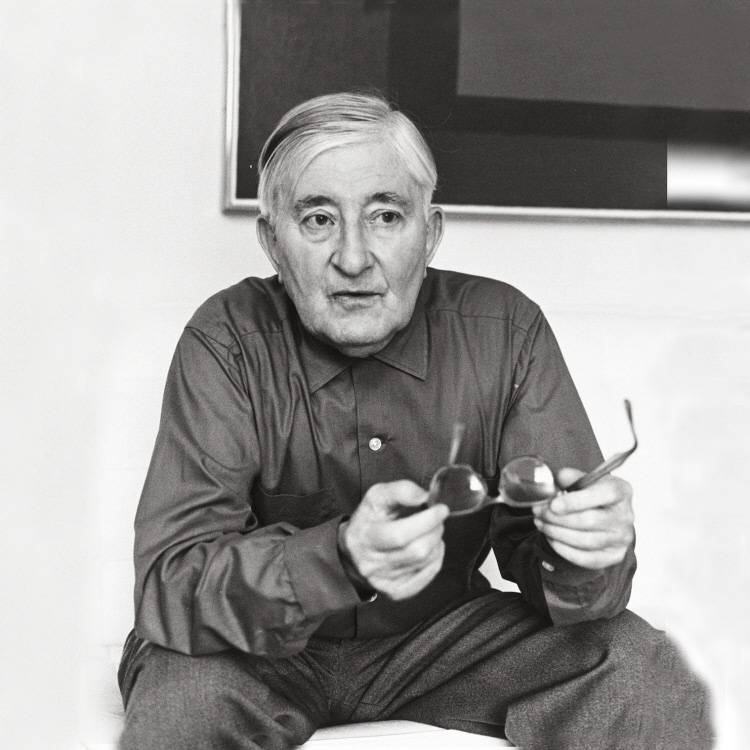Josef Albers
Josef Albers
The German painter Josef Albers was born in Bottrop on March 19, 1888, and died in New Haven on March 26, 1976.
After learning the art of drawing and painting in Berlin, Essen and Munich, Albers entered the newly established Bauhaus art school (art school founded by Walter Gropius in 1919) in Weimar in 1920. Five years later, when the school was moved to Dessau, he served as a teacher there.
His artistic language aims to subvert the static nature of painting by emphasizing the instability of forms. To achieve the best result, Alberts repeats abstract geometric patterns employing mostly primary colors. The works of this early period are mainly stained-glass collages, furniture designs, prints and metal creations.
In 1933, with the Nazi repression, the Bauhaus school was forced to close its doors and Albers moved to the United States, becoming a citizen in 1939.
In North Carolina he taught painting until 1949. In 1950 he moved to New Haven (Connecticut) to teach at Yale University, where he remained until 1958. During this period his painting aims to explore the perceptual effects of the eye with very similar geometric designs and ambiguous, unstable forms.
Josef Alber's experiences, also written in the essay Interaction of color (1963 edition), were of fundamental importance for research in optical art.

The German painter Josef Albers was born in Bottrop on March 19, 1888, and died in New Haven on March 26, 1976.
After learning the art of drawing and painting in Berlin, Essen and Munich, Albers entered the newly established Bauhaus art school (art school founded by Walter Gropius in 1919) in Weimar in 1920. Five years later, when the school was moved to Dessau, he served as a teacher there.
His artistic language aims to subvert the static nature of painting by emphasizing the instability of forms. To achieve the best result, Alberts repeats abstract geometric patterns employing mostly primary colors. The works of this early period are mainly stained-glass collages, furniture designs, prints and metal creations.
In 1933, with the Nazi repression, the Bauhaus school was forced to close its doors and Albers moved to the United States, becoming a citizen in 1939.
In North Carolina he taught painting until 1949. In 1950 he moved to New Haven (Connecticut) to teach at Yale University, where he remained until 1958. During this period his painting aims to explore the perceptual effects of the eye with very similar geometric designs and ambiguous, unstable forms.
Josef Alber's experiences, also written in the essay Interaction of color (1963 edition), were of fundamental importance for research in optical art.
